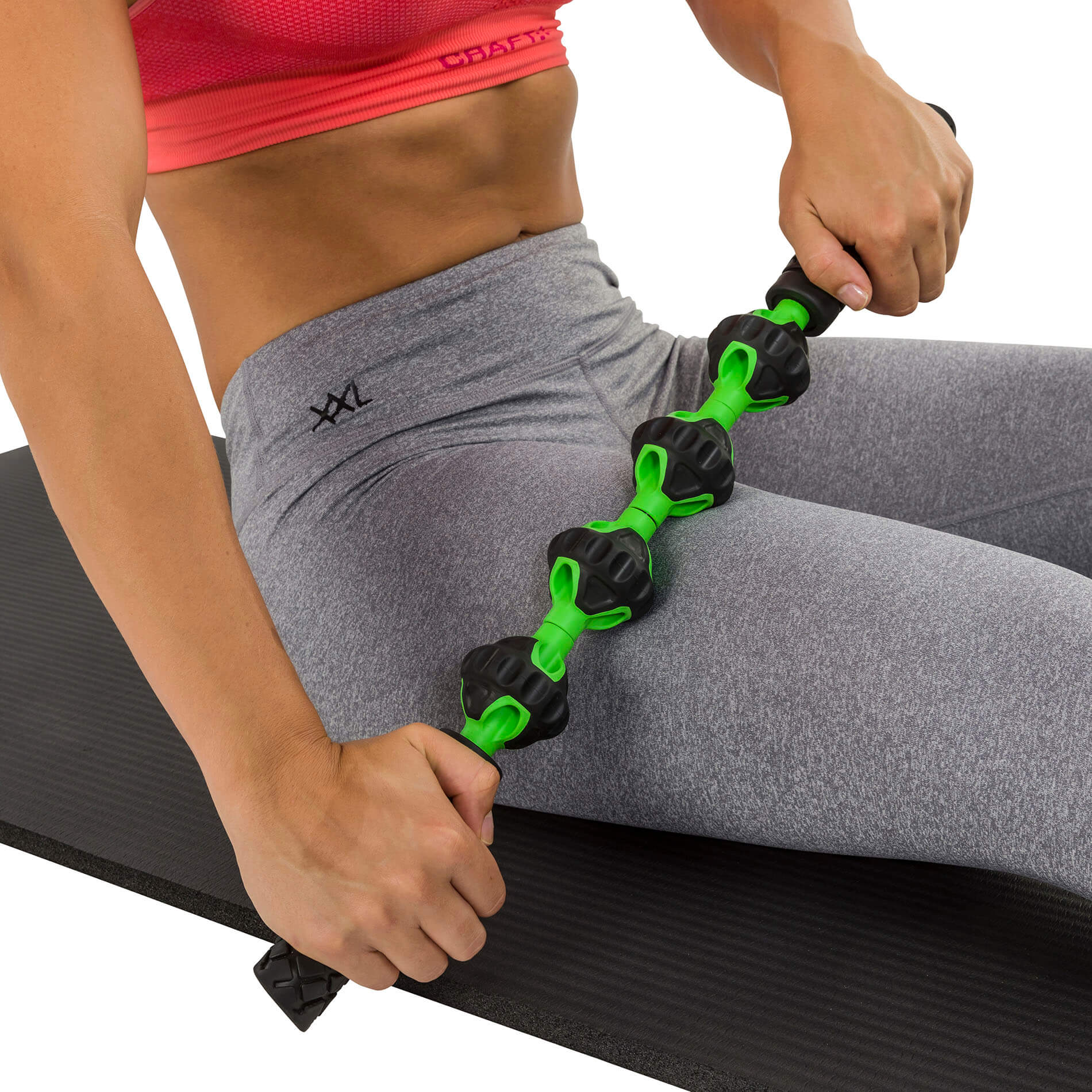Trigger points: how to treat them?
- Posted on
- Posted in Massage

Ouch, a knot! Everyone has probably had it happen at some point, whether you play sports or not: A painful spot where the muscles cramp up. Sometimes with a clearly identifiable cause, sometimes spontaneously. These are "trigger points", also called "muscle knots": a painful hardening in muscles that no longer can relax. This can cause pain, as well as a feeling of stiffness or restricted movement.
Fortunately, a trigger point can often be treated at home by massaging it. There are various tools for this. But let's start at the beginning: what is a trigger point and how does it arise?

What are trigger points?
A "knot" is caused by muscle fibres at certain points being more contracted when in rest mode than the surrounding muscles. Normally, muscles are neither stretched nor contracted while in rest mode, but in the case of a trigger point, some of the fibres are 'stuck' in a contracted state. Because the muscle tension there is higher than in the surrounding area, the muscle cannot return to its resting state. A local thickening occurs where blood flow is reduced and waste products accumulate.
How do trigger points develop?
Trigger points can occur in different ways and in different parts of the body. Usually a trigger point arises from chronic overburdening of a body part or a certain muscle. For example, because you are always working at your desk in the wrong position, or because you run every day in shoes that don't fit properly. Trigger points can also be caused by too much or the wrong kind of training or by a prolonged shortage of vitamins and minerals in your diet. Hormones can also play a role in the development of trigger points, such as during pregnancy or the menopause. A trigger point can also occur suddenly, for example due to a wrong movement or a fall. This gives your muscles such a 'blow' that they go from one moment to the next into a state of overload.
How to treat trigger points?
HDo you suffer from a trigger point? There is no need to run straight to the physiotherapist. A trigger point can often also be treated at home through massaging. Massaging is often recommended instead of stretching. A trigger point is like a knot in a shoelace. If you start pulling on it (stretching), you either loosen it or tighten it...Of course, you have to ask yourself what causes a trigger point. Is there a clearly identifiable cause, such as a fall? Or is it due to overloading or prolonged incorrect movement? If you don't tackle the chronic cause, you can massage all you want, but in the long or short term that knot in your muscles will simply return.

Massage gun
Trigger points can be deep in your muscles, too deep for massaging fingers to reach. Then a massage gun gun is the ideal solution. Thanks to the vibrations, you massage deep into your muscles, which relieves the tension so that the knot is 'loosened'. In addition, a massage gun improves circulation in the area around the trigger point, which helps to get rid of accumulated waste.For home or professional use, the Massage Gun is an excellent choice. If you are travelling, choose the travel-friendly Massage Gun Mini.

Massage balls
The rolling movement of a massage ball also improves the circulation, so that accumulated waste can be discharged more easily. Depending on how deep the pain is, roll the massage ball firmly over the painful spot. This can be a hand movement, but also by 'wedging' the ball between, for example, the wall or the floor and your back, and making rotating movements for places that are difficult for you to reach. It is also wonderfully relaxing after an intensive workout or a long day at the office!
Foam roller and massage roller
Massage rollers and foam rollers like the Yoga Grid Foam roller and Yoga massage roller are excellent to carry along in a gym bag, or in a suitcase if you go on holidays, or in the car dashboard for a long journey in the car. With a foam roller you massage superficially or deeper to warm up the muscles, stimulate the circulation and loosen stubborn muscle knots.The massage rollers have a smart handle and, unlike a massage ball, you only use the roller with your hands.





